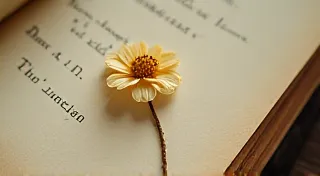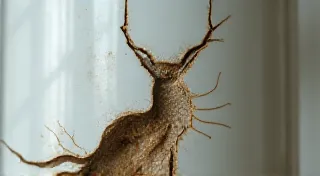Echoes in Tortoiseshell: Unearthing the Silent Narratives of Vintage Combs
They lie nestled in antique shops, tucked away in estate sales, or perhaps discovered in a forgotten trunk – vintage hair combs. More than mere accessories, these delicate objects are silent storytellers, whispering echoes of bygone eras. Each curve, each inlaid detail, represents a moment in time, a glimpse into the lives of women who meticulously crafted their appearances, driven by societal expectations, personal aspirations, and a quiet elegance that feels increasingly rare today. Collecting them isn't just about acquiring beautiful objects; it's about uncovering fragments of history, connecting with the past through tangible artistry.
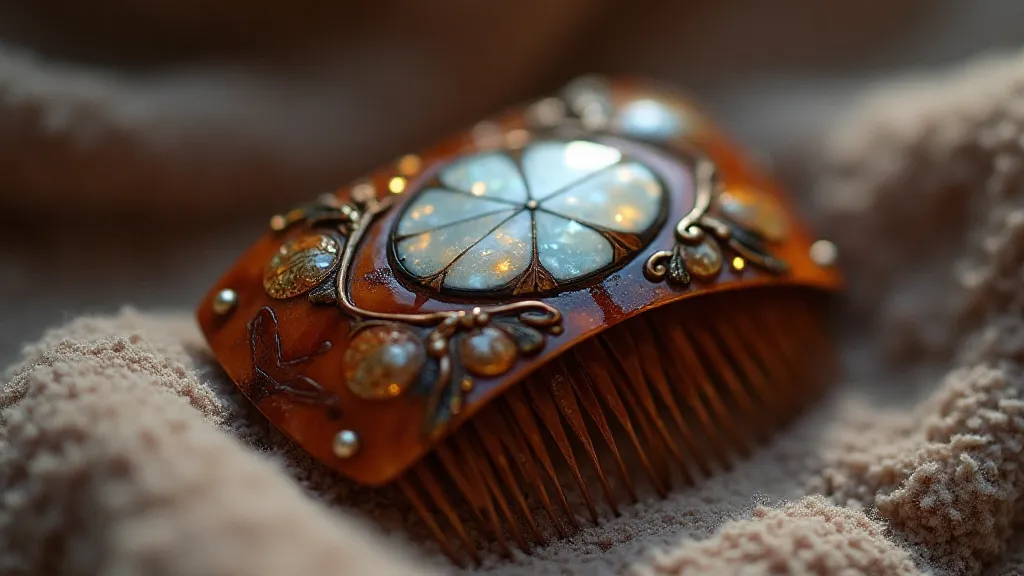
A History Woven in Bone and Horn
The history of hair combs is deeply intertwined with social customs and technological advancements. The earliest combs, dating back thousands of years, were simple tools crafted from bone, ivory, and wood. Primarily functional, they served the practical purpose of removing lice and tangles. However, as societies developed, so too did the artistry surrounding personal grooming. Ancient Egyptians, known for their elaborate hairstyles and cosmetics, produced combs of exquisite detail, often adorned with precious stones and intricate carvings. These weren’t just tools; they were symbols of status and refinement.
The 18th and 19th centuries witnessed a significant shift. The rise of industrial production initially made combs more accessible, but the Victorian era fostered a unique appreciation for handcrafted beauty. Tortoiseshell, derived from the shells of sea turtles, became particularly prized for its rich color and ability to be easily worked into beautiful shapes. While ethically questionable by today’s standards, the material's popularity reflects a different cultural context. Horn, often from cattle, also proved a versatile material, allowing for intricate designs and the incorporation of embellishments.
Victorian Elegance and the Language of Hair
The Victorian era (1837-1901) held a peculiar fascination with hair. It wasn't just about covering the scalp; it was an art form, a performance of femininity. Elaborate updos, braids, and curls were painstakingly created, often utilizing a complex system of pins, nets, and, of course, hair combs. These combs weren't randomly chosen. They were carefully selected to complement the hairstyle and, subtly, to convey a message. A finely carved ivory comb might suggest refinement and wealth, while a horn comb with floral detailing could evoke a romantic, natural aesthetic.
Imagine a young woman preparing for a ball. She would meticulously arrange her hair, spending hours ensuring every curl was perfect. The choice of comb—perhaps a delicate tortoiseshell piece adorned with jet beads—would be a personal statement, a reflection of her hopes and aspirations. She might have received it as a gift from a suitor, a token of his affection, or perhaps inherited it from her mother, carrying with it a lineage of family history and tradition.
The Art Deco Era: Geometric Glamour
The early 20th century brought about a dramatic shift in aesthetic, and hair combs were no exception. The Art Deco period (1920s-1930s) embraced geometric designs, bold colors, and luxurious materials. Hair combs of this era were characterized by sharp angles, stylized floral patterns, and the incorporation of materials like Bakelite, silver, and enamel. The flapper style, with its bobbed hair and emphasis on modernity, provided the perfect canvas for these striking accessories.
These weren’t shy whispers of elegance; they were confident pronouncements of style. Think of a jazz age socialite, her sleek bob perfectly accented by a geometric silver comb with onyx inlays. It was a statement of independence, of embracing a new era of freedom and self-expression.
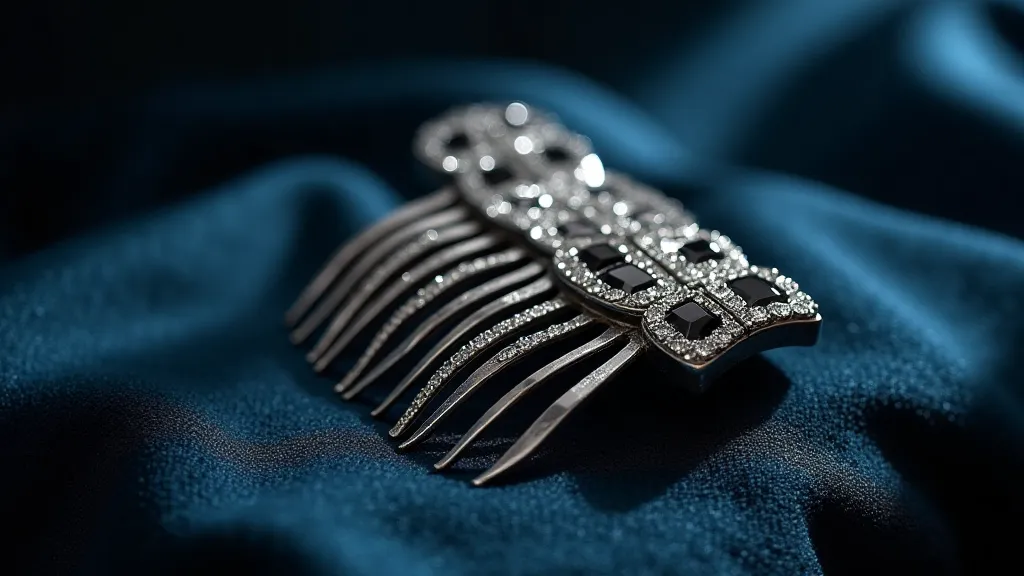
Materials and Craftsmanship: A Collector’s Eye
For the serious collector, understanding the materials and craftsmanship is crucial. Tortoiseshell, with its distinctive grain and color variations, is often sought after. However, many imitation tortoiseshell combs were produced, often made from casein or other materials. Learning to distinguish between the genuine article and the imitations requires careful observation and research.
Horn combs, while less valuable than tortoiseshell, can still be beautiful and historically significant. The quality of the carving and the intricacy of the design are key indicators of value. Bakelite, a popular material during the Art Deco era, is often brightly colored and can be easily identified by its distinctive smell when heated (although heating Bakelite is not recommended!).
Look beyond the surface. Examine the detail. Are the teeth evenly spaced? Is the carving precise? Does the piece feel solid and well-made? These details speak volumes about the skill and care that went into its creation.
Restoration and Preservation: Honoring the Past
Many vintage hair combs bear the marks of time – cracks, chips, and faded finishes. While complete restoration should be approached with caution, gentle cleaning and stabilization can help preserve these treasures. Avoid harsh chemicals or abrasive cleaning methods. A soft brush and mild soap can often suffice. For more significant damage, consult with a professional conservator.
Remember, the goal isn't to make the comb look brand new. It's to stabilize its condition and protect it from further deterioration while retaining its character and history. A few signs of age are part of what makes a vintage comb so special – they tell a story of a life lived, a time gone by.
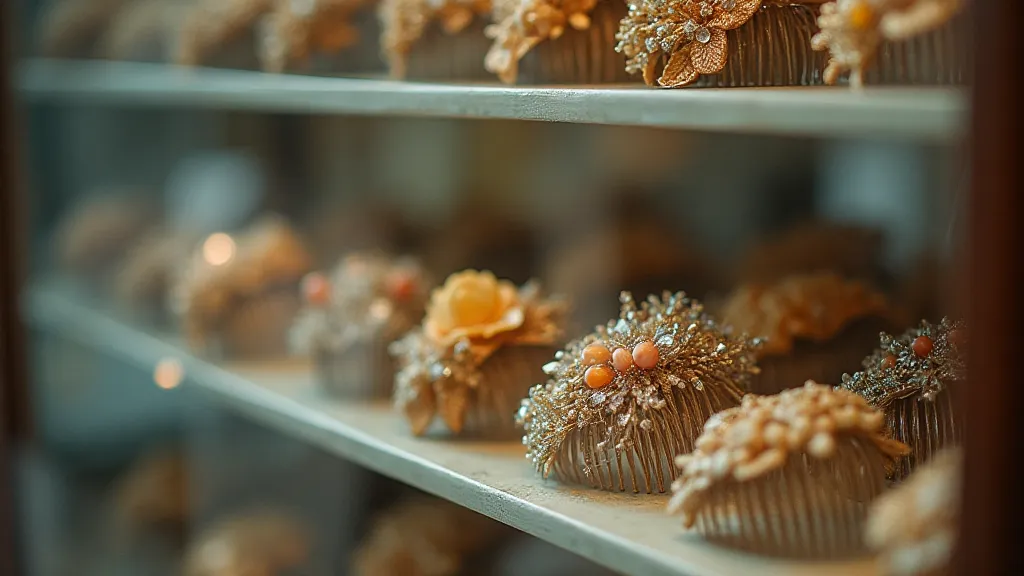
Beyond Adornment: Connecting with History
Collecting vintage hair combs is more than just acquiring beautiful objects. It’s about connecting with the past, understanding the social customs and aesthetic values of bygone eras. Each comb represents a silent narrative, a whisper of a life lived. By appreciating these small treasures, we can gain a deeper understanding of the women who wore them and the world they inhabited. It's a chance to hold history in your hand and appreciate the enduring beauty of craftsmanship and artistry.

